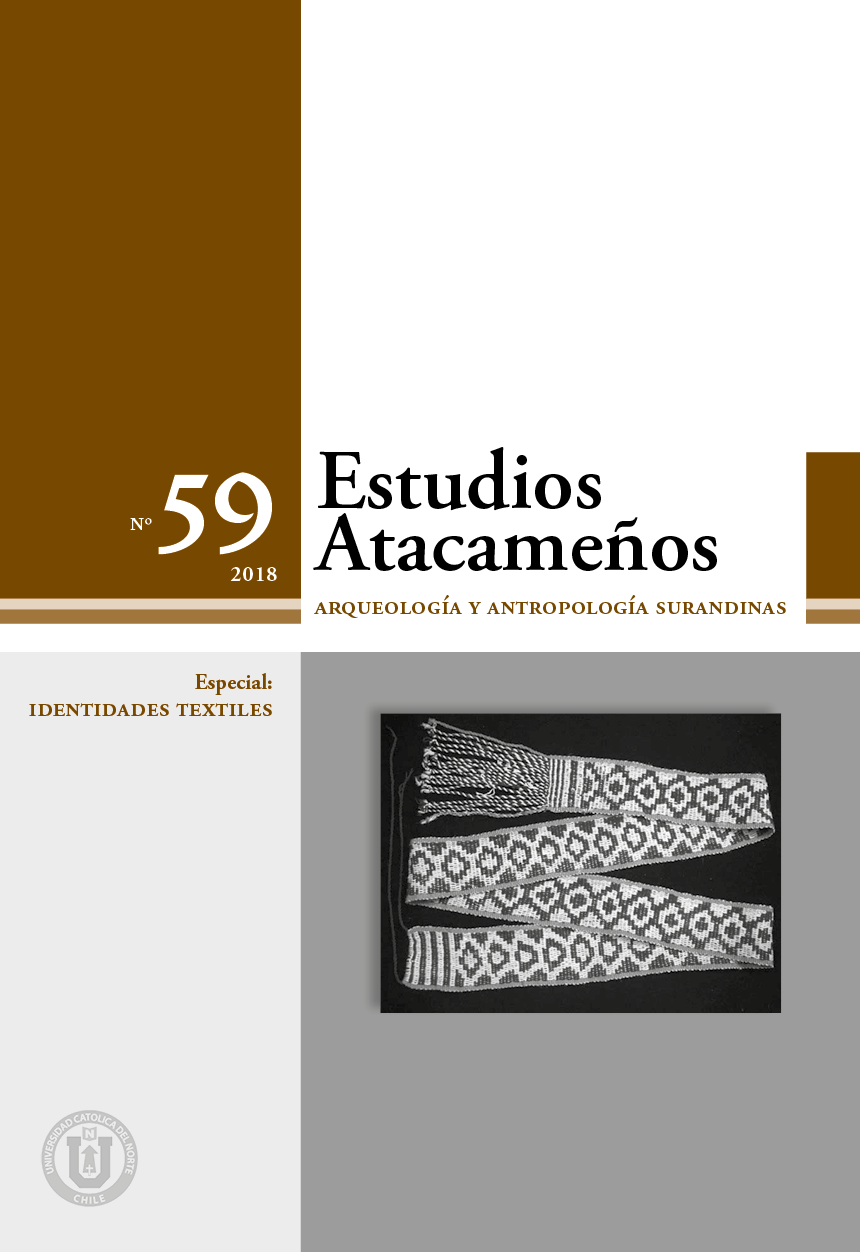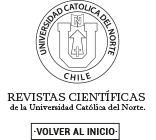Indigenous clothing changes in the Andean highlands under Spanish colonialism
Keywords:
Colonial period, indigeneity, gendered state, clothing, AndesAbstract
This article outlines a material culture approach that combines theoretical perspectives on exchange in value and the gendered body politic. This theoretical framework is applied to three elements of costume changes in the Spanish Colonial period (ca. AD 1532-1826) of Andean South America. I explore the impact of
Spanish public policies, gender roles, and social ideals on the maskaypacha forehead fringe, inca male tunics (unku), and female shawls (lliqlla). I argue that changes in indigenous dress are largely confined to males in the Early Colonial period, which mirrors the gendered nature of the Spanish body politic. This material culture reading of indigenous clothing changes provides a useful model for analyzing the gendered categories of indigenous political symbols and costumes.
Downloads
References
Barrkman, J. (2006). Symbols of power and life: Indian trade textiles and their inclusion into the ritual practices of headhunting and ceremonial houses by the Atoin Meto of West Timor. En S. Kleinert (Ed.), Crossing cultures: Art, politics, and identity (pp. viii–xiv). Darwin NT, Australia: Charles Darwin University Press.
Canessa, A. (2000). Contesting hybridity: Evangelistas and kataristas in highland Bolivia. Journal of Latin American Studies, 32, 115–147.
Cieza de León, P. ([1551] 1959). The Incas, V. Wolfgang von Hagen (Ed.), H. de Onis (Trans.). Norman: University of Oklahoma Press.
Cobo, B. ([1653] 1990). Inca religion and customs (trans. and ed. R. Hamilton). Austin: University of Texas Press.
Cooksey, S. (2011). Bark and raffia cloth: Interpreting indigenous prestige. En S. Cooksey (Ed.), Africa interweave: Textile diasporas (pp. 107-112). Gainesville: Samuel P. Harn Museum of Art, University of Florida.
Covey, R. A. (2006). Chronology, succession, and sovereignty: The politics of Inka historiography and its modern interpretation. Comparative Studies in Society and History, 48(1), 169-199.
Craik, J. (1994). The face of fashion: Cultural studies in fashion. New York: Routledge.
Cummins, T. B. F. (1991). We are the other: Peruvian portraits of Colonial Kurakakuna. En K. Andrien & R. Adorno (Eds), Transatlantic empires: Europeans and Andeans in the sixteenth century (pp. 203–232). Berkeley: University of California Press.
Cummins, T. B. F. (2002). Toasts with the Inca: Andean abstraction and colonial images on quero vessels. Ann Arbor: University of Michigan Press.
Cúneo-Vidal, R. (1925). Historia de las guerras de los ultimos Incas Peruanos contra el poder Español. Barcelona: Casa Editorial Maucci.
Dean, C. (1999). Inka bodies and the body of Christ: Corpus Christi in colonial Cuzco, Peru. Durham: Duke University Press.
de Areche, J. A. (1836). Setencia pronunciada en el Cuzco por el Visitador D. José Antonio de Areche, contra José Gabriel Tupac-Amaru, su mujer, hijos, y demás reos principales de la sublevación. En P. de Angelis (Ed.), Documentos para la historia de la sublevación de José Gabriel de Tupac-Amaru, cacique de la provincia de Tinta, en el Perú (pp. 44–51). Buenos Aires: Imprenta del Estado.
de Xerez, F. ([1534] 1985). Verdadera relación de la conquista del Perú. Concepción Bravo, Crónicas de America (Eds.), no. 14. Historia 16, Madrid.
Guaman Poma de Ayala, F. ([1615] 1980). El primer nueva corónica y buen gobierno, J. V. Murra & R. Adorno (Eds.), Jorge L. Urioste (Trans.), vol. 2(3). Mexico: Siglo Veintiuno.
Hall, S. (1990). Cultural identity and diaspora. En J. Rutheford (Ed.), Identity: Community, culture and difference (pp. 222–237). London: Lawrence and Wishart.
Hogue, M. (2006). Cosmology in Inca tunics and tectonics. En M. Young-Sanchez & F. W. Simpson (Eds.), Andean textile traditions: Papers from the 2001 Mayer center symposium at the Denver art museum (pp. 100–119). Denver: Denver Art Museum.
Hunt, L. (1984). Politics, culture and class in the French revolution. Berkeley: University of California Press.
Iriarte, I. (1993). Las túnicas incas en la pintura colonial. En H. Urbano (Ed.), Mito y simbolismo en los Andes: La figura y la palabra (pp. 53–86). Cuzco: Centro de Estudios Regionales Andinos ‘Bartolomé de Las Casas’.
Kellogg, S. (1992). Hegemony out of conquest: The first two centuries of Spanish rule in central Mexico. Radical History Review, 53, 27–46.
Kellogg, S. (2005). Weaving the past: A history of Latin America’s indigenous women from the pre-Hispanic period to the present. Oxford: Oxford University Press.
Kleinert, S. (Ed.) (2006). Introduction. En Crossing cultures: Art, politics, and identity (pp. viii–xiv). Darwin NT, Australia: Charles Darwin University Press.
Kopytoff, I. (1986). The cultural biography of things: Commoditization as process. En A. Appadurai (Ed.), The social life of things (pp. 64–91). Cambridge: Cambridge University Press.
Kuchta, D. (1996). The making of the self-made man: Class, clothing, and English masculinity, 1688–1832. En V. de Grazia & E. Furlough (Eds), The sex of things: Gender and consumption in historical perspective (pp. 54–78). Berkeley: University of California Press.
Maynard, M. (2002). Blankets: The visible politics of indigenous clothing. En W. Parkins (Ed.), Fashioning the body politic: Dress, gender, citizenship (pp. 189–204). Oxford: Berg.
Meisch, L. A., & Rowe, A. P. (1998). Indigenous Ecuadorian costume. En A. P. Rowe (Ed.), Costume and identity in highland Ecuador (pp. 39–49). Washington, D.C.: The Textile Museum.
Milton, J., Orsi, R. & Harrison, N. (1986). The serpent and the robe: The pre-Colombian god-kings; The papal states. Boston: Boston Publishing.
Montell, G. (1929). Dress and ornament in ancient Peru: Archaeological and historical studies. Göteborg, Sweden: Elanders Boktryckeri Aktiebolag.
Murra, J. (1962). Cloth and its functions in the Inca state. American Anthropologist, 64, 710–728.
Parkins, W. (2002). Introduction: (Ad)dressing citizens. En W. Parkins (Ed.), Fashioning the body politic: Dress, gender, citizenship (pp. 1–17). Oxford: Berg.
Pillsbury, J. (2002). Inca unku: Strategy and design in Colonial Peru. Cleveland Studies in the History of Art, 7, 68–103.
Pillsbury, J. (2006). Inca-Colonial tunics: A case study of the Bandelier set. En M. Young-Sanchez & F. W. Simpson (Eds.), Andean textile traditions: Papers from the 2001 Mayer center symposium at the Denver art museum (pp. 122–168). Denver: Denver Art Museum.
Pizarro, P. ([1571] 1944). Relación del descubrimiento y conquista de los reinos del Perú y del gobierno y orden que los naturales tenían, y tesoros que en ella se hallaron, y de las demás cosas que en él han subcedido hasta el día de la fecha. Buenos Aires: Editorial Futuro.
Robinson, N. V. (1987). Mantones de Manila: Their role in China’s silk trade. Arts of Asia, 17, 65–75.
Romero, C. A. (1923). Festividades del tiempo heróico del Cuzco. Inca, 1, 447–454.
Rowe, A. P. (1978). Technical features of Inca tapestry tunics. Textile Museum Journal, 17, 5–28.
Rowe, A. P. (1984). Costume under the Inca empire. En A. P. Rowe (Ed.), Costume and history in highland Ecuador (pp. 84–95). Austin: University of Texas Press.
Rowe, J. H. (1954). El movimiento national Inca del siglo XVIII. Revista Universitaria, 43, 17–47.
Salomon, F. (1987). Ancestor cults and resistance to the state in Arequipa, ca. 1748–1754. En S. J. Stern (Ed.), Resistance, rebellion, and consciousness in the Andean peasant world, 18th to 20th centuries (pp. 148-165). Madison: University of Wisconsin Press.
Schneider, D. (2007). La mama negra–¿Símbolo de la multiculturalidad ecuatoriana?. Indiana, 24, 157–71.
Weismantel, M. (2001). Cholas and pishtacos: Stories of race and sex in the Andes. Chicago: University of Chicago Press.
Downloads
Published
Issue
Section
License

All works published in Revista Estudios Atacameños (ISSN on line:0718-1043) Revista Estudios Atacameños Creative Commons International 4.0 attribution (CC BY 4.0) licence.
Authors remain the owners of their work and may republish their articles elsewhere without having to request permission, as long as they indicate that the work was originally published in Revista Estudios Atacameños (ISSN on liine:0718-1043).












